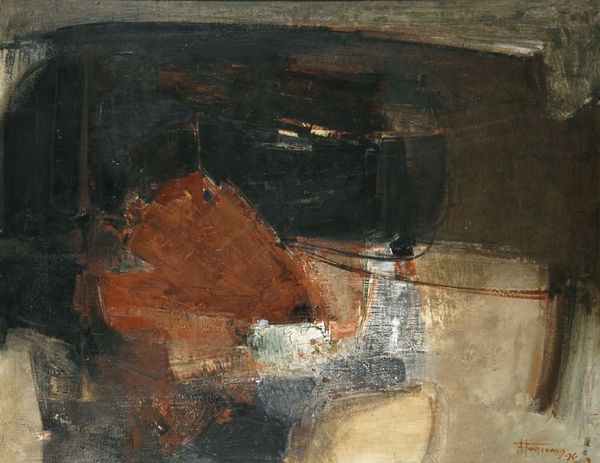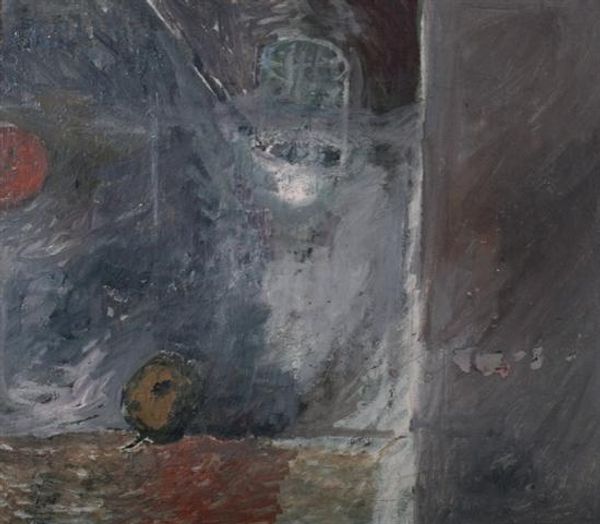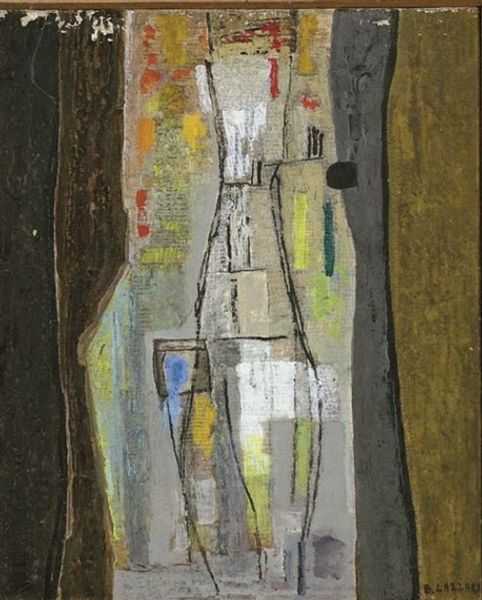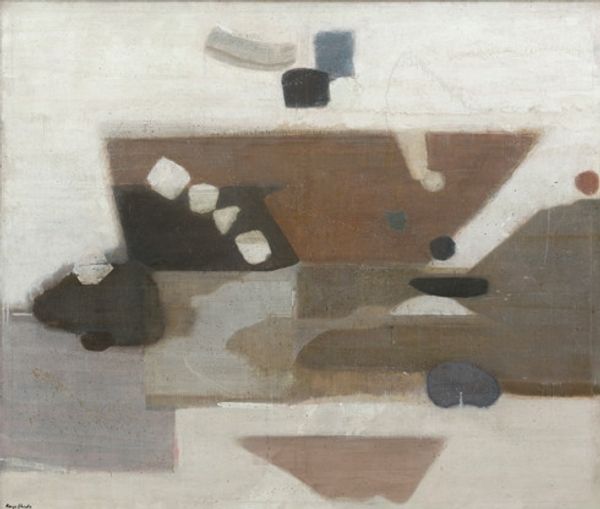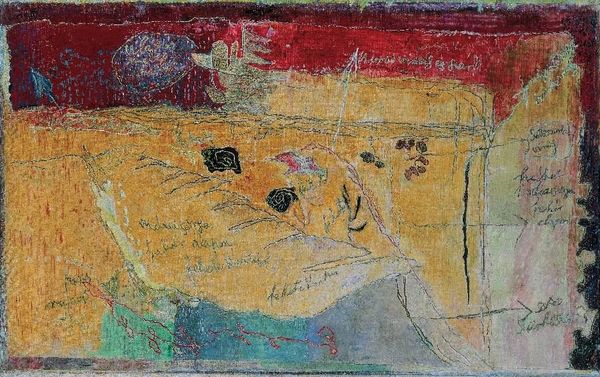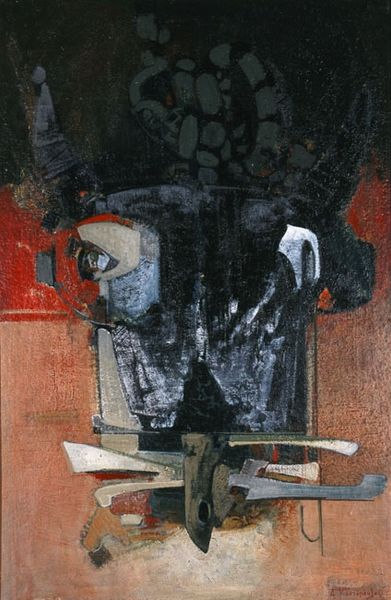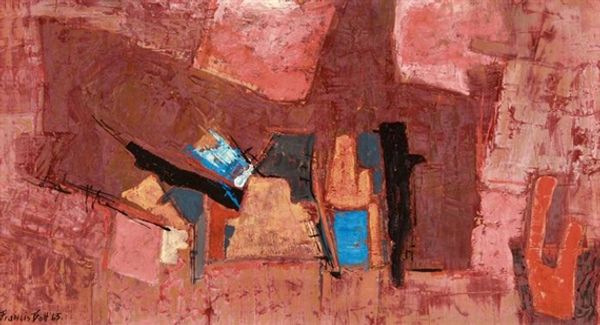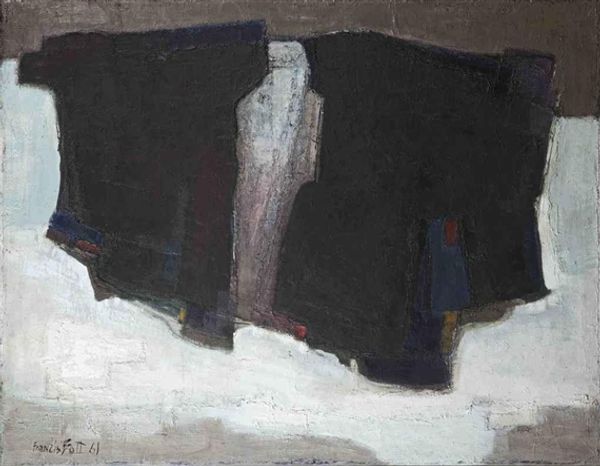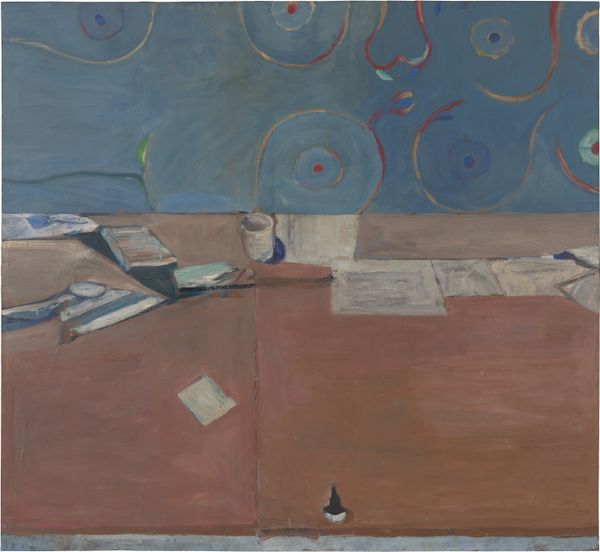
painting, oil-paint
#
abstract-expressionism
#
painting
#
oil-paint
#
abstraction
#
modernism
Copyright: Kenzo Okada,Fair Use
Editor: We're looking at Kenzo Okada’s "Number 2" from 1954, an oil painting. There’s this tension between the geometric forms and the muted palette; I find myself feeling quite contemplative looking at it. How do you interpret this work? Curator: This piece speaks to me about the negotiation between cultural identity and artistic expression that was happening for Japanese-American artists during the mid-20th century. The Ab-Ex movement was deeply invested in individual expression, but even within abstraction, artists of color faced pressure to address their identities. Do you see any tension between the calligraphic traditions of Okada’s heritage and the perceived freedom of abstract expressionism in this piece? Editor: I see what you mean, especially with the shapes that almost resemble characters. I hadn't initially considered his background when thinking about the painting. I was more focused on the colors and how they create a sense of depth despite being mostly flat. Curator: Precisely! Okada’s subtle color choices are his own way of synthesizing seemingly disparate cultural traditions. The monochromatic washes are meditative, and the layered effect asks us to contemplate his process of integrating his past with his present. This quiet layering embodies the nuances of identity rather than offering a declarative statement. What might that have meant for him, expressing identity during the rise of the Civil Rights movement? Editor: So the act of *not* making a loud statement becomes its own statement? This is fascinating! Thanks, I never thought about abstract art in that context. Curator: It reframes our understanding of Ab-Ex and opens it up beyond a purely formal analysis. These artists, like Okada, contributed a great deal to the development of modernism, expanding its potential to engage with questions of identity.
Comments
No comments
Be the first to comment and join the conversation on the ultimate creative platform.
